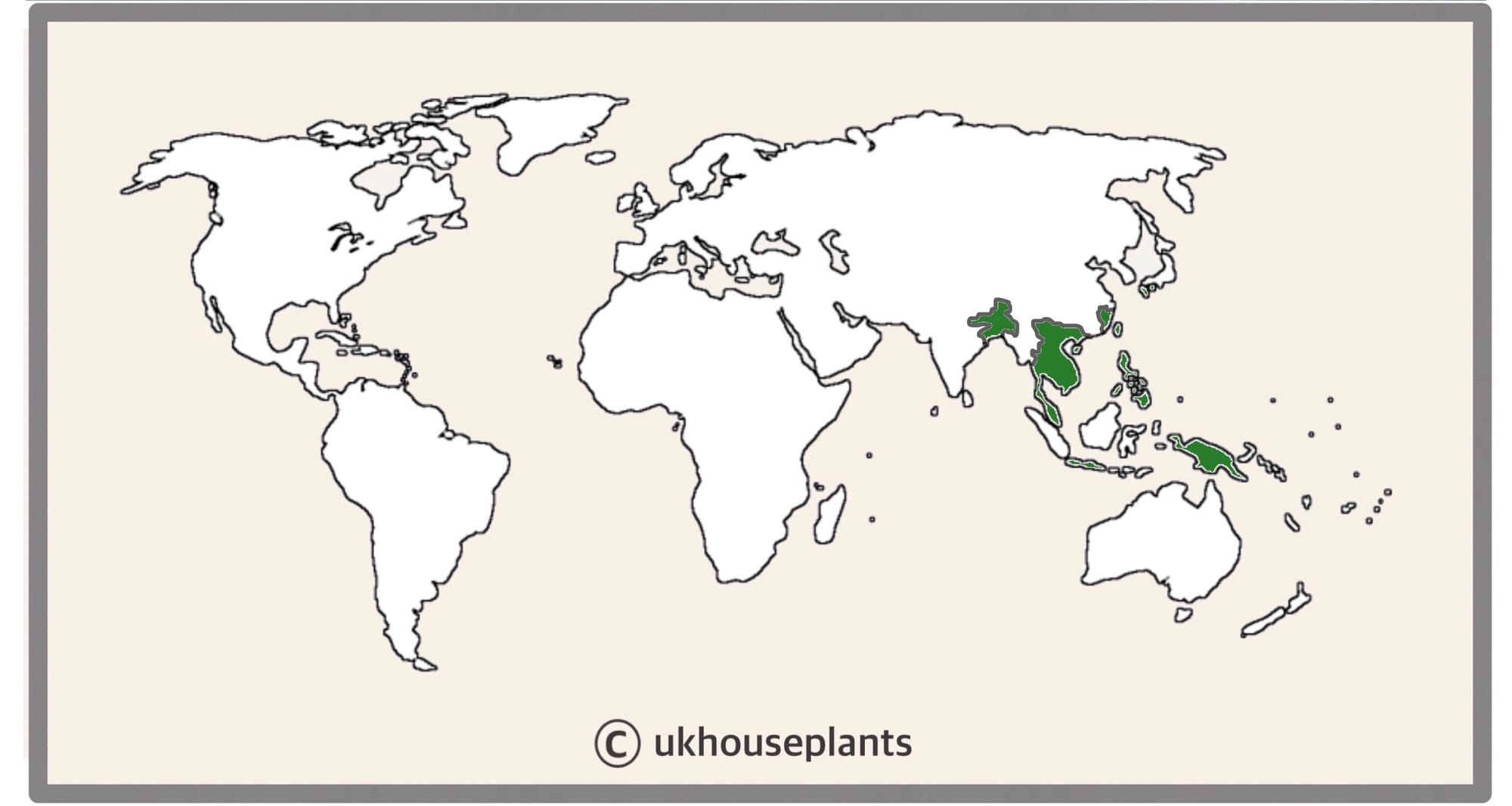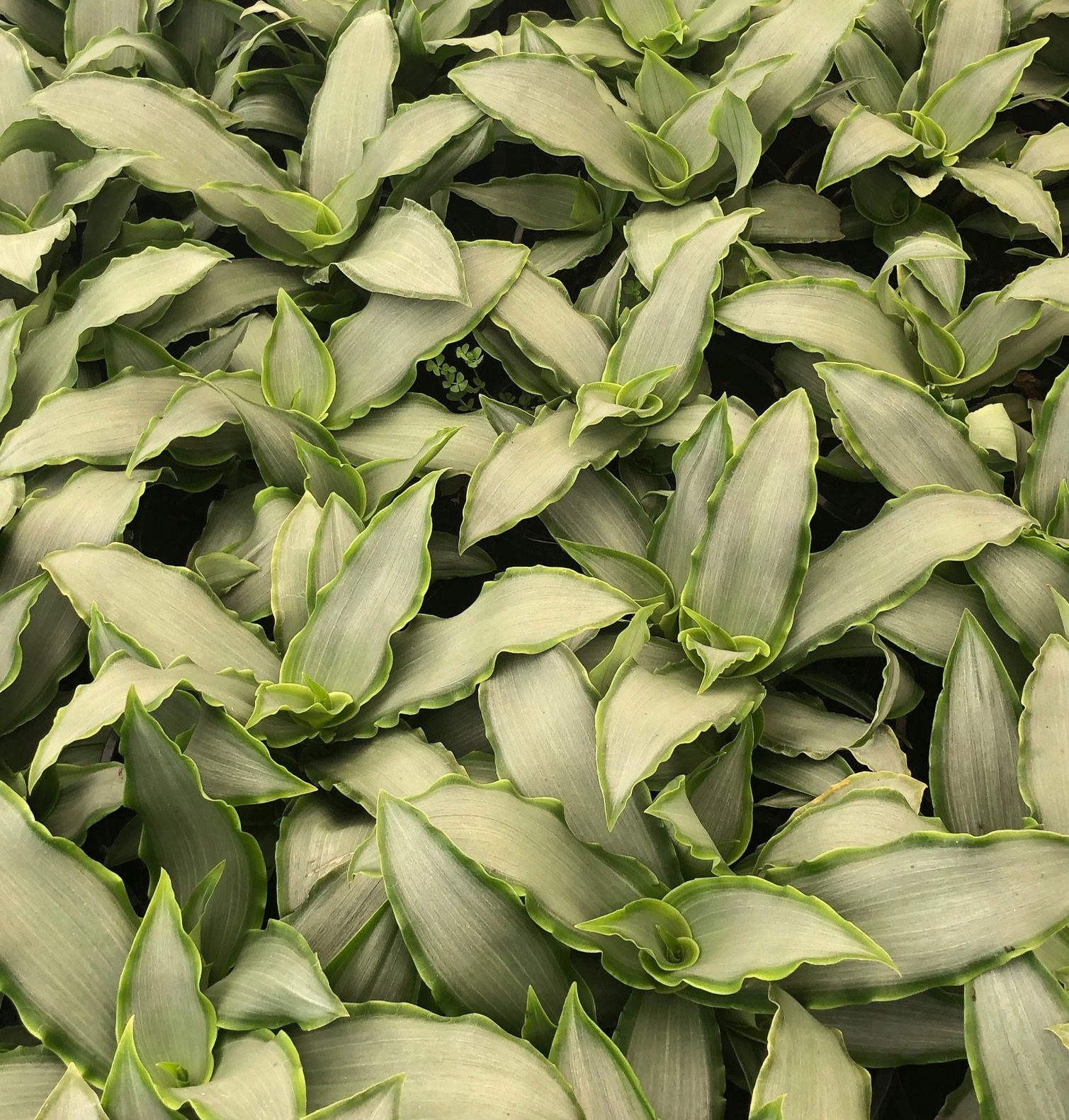
Murdannia loriformus 'Bright Star'
Contents
- Top Tips
- Location, Water, Humidity & Fertilisation
- Common Issues
- Origins, Temperature, Propagation, Repotting & Toxicity.
Need the answer to a specific plant query? Book a 1-to-1 video call with THE HOUSEPLANT DOCTOR™, the website's friendly author, to overcome and address your niggling problem! Available on iMessage, WhatsApp, Facebook Messenger & more.
Top Tips & Info
- Care Difficulty - Easy
- Provide a bright, indirect location with the absence of direct sun. Although Murdannia look as if they can tolerate the sun, their leaves will soon curl and develop sun-scorch.
- Allow the soil's top third to dry out in between waters, reducing this in the autumn and winter. Do not promote dry soil often.
- Fertilise using a 'Houseplant' labelled feed every four waters in the spring and summer, reducing this to every six in the colder months.
- Repot every three years using a 'Houseplant' labelled potting mix and the next sized pot.
- Keep an eye out for any loss of pre-existing variegations (patterns), as too-dark locations will cause them to fade & disappear. Settings that are too bright may develop exaggerated variegations with little to no green areas.
Location & Light - 🔸🔸
Provide a bright, indirect location with minimal sunlight. Those grown in a darker setting will significantly increase the chance of root rot, as well as variegated specimens losing their colourful patterns. As long as you can read a newspaper in the desired location without the use of artificial light, you'll be good to go.
Remember - The amount of light and current season of the year will directly govern the frequencies of waters per month. Specimens placed in shadier areas must be kept on the drier side to life, whereas brighter locations will require more soil moisture to lubricate photosynthesis.
Water - 🔸🔸
Allow the top third of the soil to dry out in between waters, reducing this further in the autumn and winter. For those situated in shadier environments, allow around half of the soil dry out in between waters to counteract the chance of over-watering, especially in the winter months. There is a fine line between under and over-watering with Murdannia, so try to read the weight of the pot for confirmation of when it needs a water. If the pot is much lighter than when you last hydrated it, it'll be time for another water. Under-watering symptoms include stunted growth, yellowing leaves or sudden flower loss. These issues could be a product of many elements; however, too much sunlight or forgetfulness are usually the culprits. Over-watering symptoms include the yellowing or loss of leaves, stunted growth or a rotten base. These problems are typically familiar with either too little light or heat or overly soggy soil; if you feel that root rot is the case, be sure to click on this link for more info.
Humidity - 🔸🔸
Average humidity is acceptable for Murdannia, with over-misting increasing the risk of powdery mildew or botrytis in the stem's cubbyholes. Each month, perform a gentle hose-down to hydrate its leaves and reduce the number of dust particles resting on its foliage.
Fertilisation - 🔸🔸
Fertilise every four waters during the growing period before reducing this to every six in the autumn & winter. Although an 'All-Purpose' fertiliser will still do the job, we'd recommend using a specific 'Houseplant' labelled fertiliser as it'll support the vital thirteen nutrients that this species will need to grow.
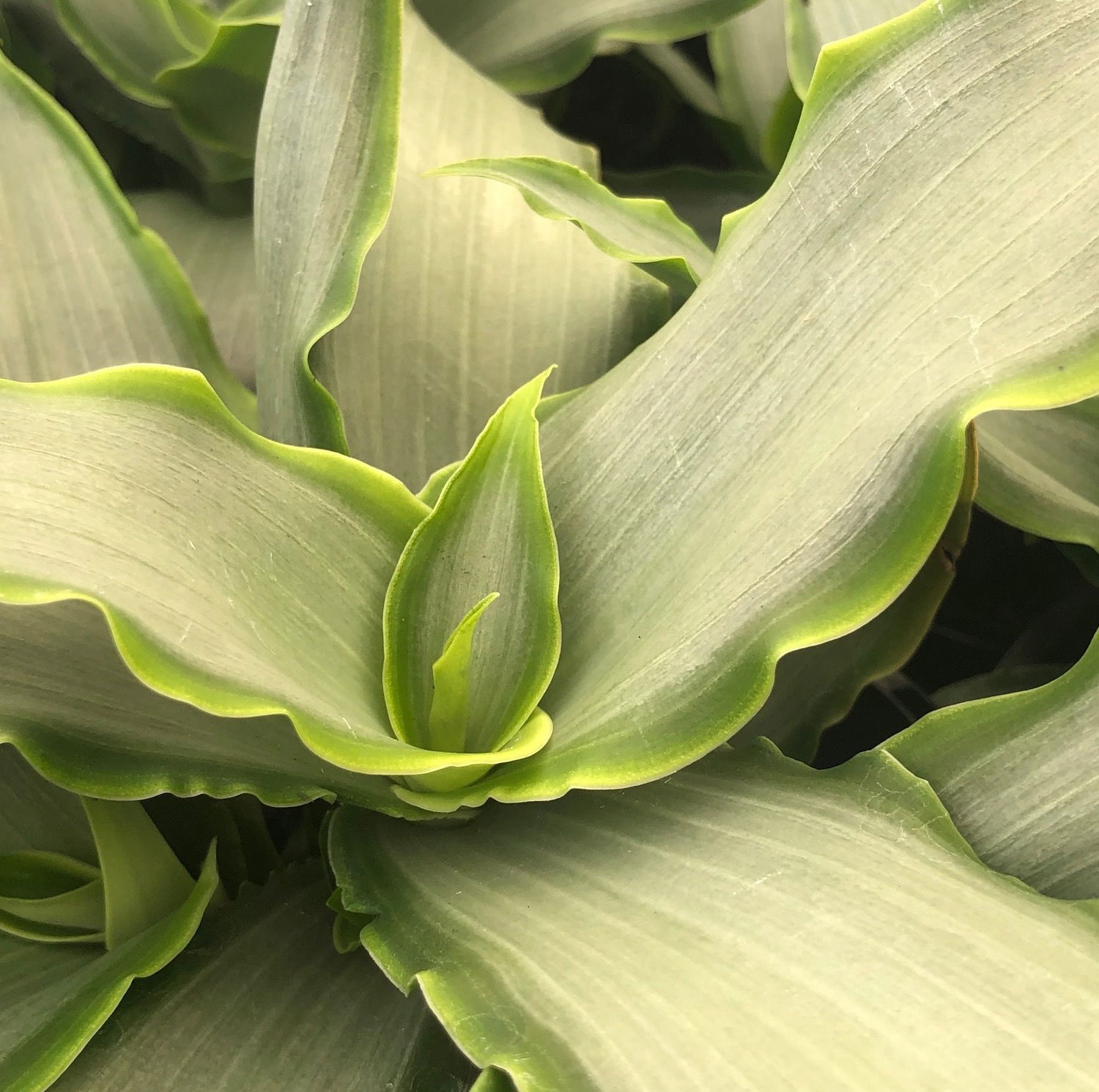 Each Murdannia vine can grow up to 10cm (4 inches) per year with the ultimate length being around 40cm.
Each Murdannia vine can grow up to 10cm (4 inches) per year with the ultimate length being around 40cm.
Common Issues with Murdannia
Root rot is a common issue with specimens sat in too moist or waterlogged soil for long periods. Symptoms include rapidly yellowing leaves, stunted growth and a rotten brown base. Take the plant out of the pot and inspect health below the soil line. If the roots sport a yellow tinge, you're good to go, but if they're brown and mushy, action must be taken immediately. More information about addressing root rot can be found on this link.
Pests could arise at any time, with infestations starting from the original nursery or via contamination in your home. With Murdannia, Mealybugs tend to be the usual inhabitants, roaming the leaves in search of chlorophyll and a site to hide its eggs. They'll stand out with white cottony webs developing across the foliage and stems. Thoroughly check the plant's cubbyholes before giving it the all-clear, or click on this link to learn more about eradicating these issues.
Always use lukewarm water, and if you choose to use tap water, allow it to stand for at least 24hrs before application. Murdannia tend to be quite sensitive to temperature change, so pouring cold tap water immediately into the pot will not only add fluoride into the soil, but it could even lead to yellowed leaves over time!
Curled leaves and brown leaf-edges are the result of too little water and/or over-exposure to the sun. Murdannia are best located in bright, indirect settings, and those that haven't acclimatised to the harsh rays will show signs of sun-scorch and environmental shock. A splash of winter sunlight is acceptable as long as the soil moisture is regularly observed, with complete avoidance once summer rays return.
A loss of variegations is caused by too little light. Move the plant into a brighter area with minimal direct sunlight to allow the variegations to appear on the new growth. If you aren't entirely displeased about the loss, and the specimen is still functioning well, simply skip this step. Alternatively, extreme variegations that hinder the plant from developing chlorophyll (green pigmentation) is typically caused by too much sunlight, which is usually accompanied by sun-scorch.
Too low humidity can cause browning leaf tips with yellow halos. Although this won't kill your specimen, you may want to increase the local moisture to prevent the new growth from adopting these symptoms. Mist or rinse the foliage from time to time and create a humidity tray whilst the heaters are active to create a stable environment for your specimen.
Rapidly yellowing lower leaves (closest to soil) are a clear sign of over-watering, usually caused by too little light. Although they can do well in semi-dark locations, the frequency of irrigations must be reduced to counteract the chance of root rot. People don't realise that a plant's root system needs access to oxygen too; when soil is watered, the air will travel upwards and out of the potting mix. A lack of accessible oxygen for the roots will cause them to subsequently breakdown over the oncoming days. Click on this link to learn more about root rot and how to address it, and always feel the pot's weight for confirmation (heaviness = good soil moisture, & vice versa).
Origins
Murdannia was first classified by John Forbes Royle in 1840, honouring Indian plant collector, Murdan Ali, who was a botanist at the Saharanpur Botanic Gardens in India. The species, M. loriformis, was first documented by Justus Hasskarl in the 1840s during a trip to Asia. Its nickname of 'Beijing Grass' originates from traditional Chinese medicine that used the foliage to alleviate respiratory symptoms and expel toxins from the body.
Temperature
12° - 30°C (54° - 86°F)
H1b (Hardiness Zone 12) - Can be grown outdoors during the summer in a sheltered location with temperatures above 12℃ (54℉), but is fine to remain indoors, too. If you decide to bring this plant outdoors, don't allow it to endure more than an hour of direct sunlight a day as it may result in sun-scorch. Regularly keep an eye out for pests, especially when re-introducing it back indoors.
Spread
Up to 0.4m in height and width, per vine; the ultimate height will take between 5 - 8 years to achieve. Murdannia will grow laterally instead of upwards, meaning that widened pots or a large area is encouraged.
Pruning & Maintenance
Remove yellow or dying leaves, and plant debris to encourage better-growing conditions. While pruning, always use clean scissors or shears to reduce the chance of bacterial and fungal diseases. Never cut through yellowed tissue as this may cause further damage in the likes of diseases or bacterial infections. Remember to make clean incisions as too-damaged wounds may shock the plant, causing weakened growth and a decline in health.
Propagation
Via Seed or Vine Cuttings.
Vine Cuttings (Easy)
- Choose the healthiest, most established vines that are wooded, but still juvenile enough to slightly bend. This propagation method can be taken all year round, using two nodes that already house aerial roots (image above). You should only have two nodes so that the lower one is for root development and the other for foliar growth. Remove the lower leaf so that each cutting only has one leaf.
- Cut directly below a node using a clean knife to reduce bacteria count. Remove the lower leaf and place the vine into a moist, well-draining potting mix. 'Houseplant' labelled compost is best as it'll include perlite for better air circulation within the soil.
- Use a 5-inch pot that has good drainage holes - plastic or terracotta are both acceptable in this instance. Try not to over-pot the cuttings - blackleg occurs when the bottom wound becomes infected, typically caused by water-logging or a too-damaged wound. See the last image towards the bottom of the article.
- Set the cutting into the compost, keeping the foliage above the soil line. Be sure to submerge the lower node into the soil wholly, or else root development will be hindered.
- Provide a bright, indirect setting with adequate warmth and the avoidance of direct sunlight nearby radiators. Place the potted cutting into a transparent plastic bag for the first couple of weeks to lock in extra humidity so that the cutting doesn't dry out. Maintain moist, but not soggy, compost throughout this process.
- Open the bag every two days for half an hour for the prevention of disease. After a month of being placed in soil, remove the bag and follow the care tips provided above.
Flowers
Murdannia will flower perennially during the summer months of the year, providing it has a sufficient resting period in the autumn and winter. Its small white flowers will last up to one week, hanging proudly over the foliage line.
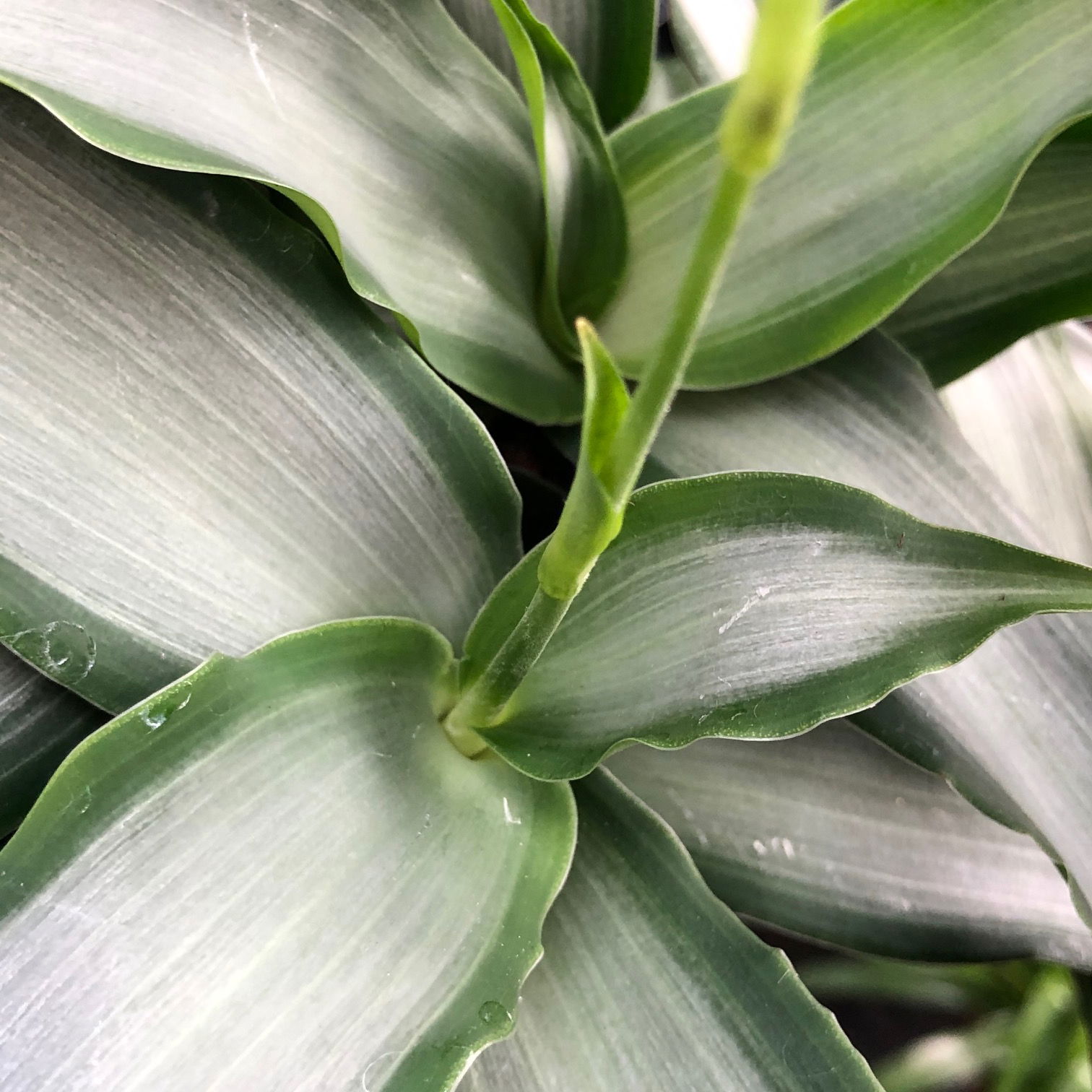 New flower spikes will emerge in the vines' terminals, halting the further growth of new leaves (on that particular vine). It will subsequently produce basal offsets once the flowering process has finished.
New flower spikes will emerge in the vines' terminals, halting the further growth of new leaves (on that particular vine). It will subsequently produce basal offsets once the flowering process has finished.
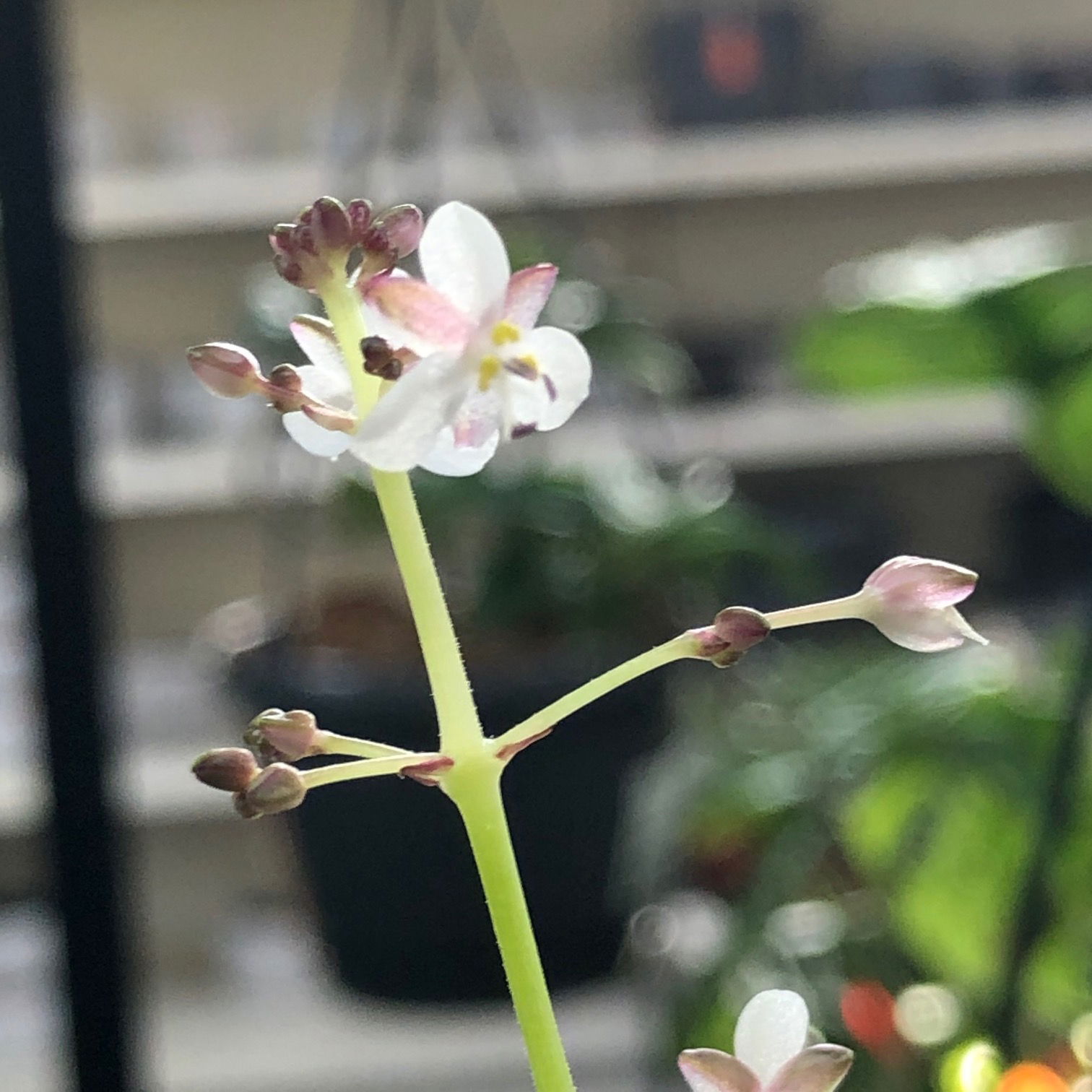 The inflorescence of a Murdannia loriformis.
The inflorescence of a Murdannia loriformis.
Repotting
Repot every three years in the spring, using a 'Houseplant' labelled compost and the next sized pot with adequate drainage. Hydrate the plant 24hrs before tinkering with the roots to prevent the risk of transplant shock. For those that are situated in a darker location, add a thin layer of small grit in the pot's base to improve drainage and downplay over-watering. Click here for a detailed step-by-step guide on transplantation, or via this link to learn about repotting with root rot.
Book a 1-to-1 video call with Joe Bagley if you'd like a personal guide to repotting your houseplant. This will include recommending the right branded-compost and pot size, followed by a live video call whilst you transplant the specimen for step-by-step guidance and answer any further questions!
Pests & Diseases
Keep an eye out for mealybugs, spider mites, scale & thrips that'll locate themselves in the cubbyholes and undersides of the leaves. Typical diseases associated with Murdannia are leaf-spot disease, botrytis & root rot; click here for more information about how to identify and address any of these issues.
Toxicity
Not known to be poisonous when consumed by pets and humans. If large quantities are eaten, it may result in vomiting, nausea and a loss of appetite.
Retail Locations
Dobbies, Blue Diamond & Online Stores.
Book a 1-to-1 Call with THE HOUSEPLANT DOCTOR™
If you need further advice with your houseplants, book an advice call with ukhouseplants' friendly and expert writer today! This can be done via a video or audio call on most apps, including Facebook, FaceTime & Skype. A ten-minute call costs £5.99 (US$7), or £15.99 for thirty minutes. You can ask multiple questions, including queries on plants, pests, terrariums, repotting advice and anything in between. Please consider supporting this service to keep ukhouseplants thriving!
